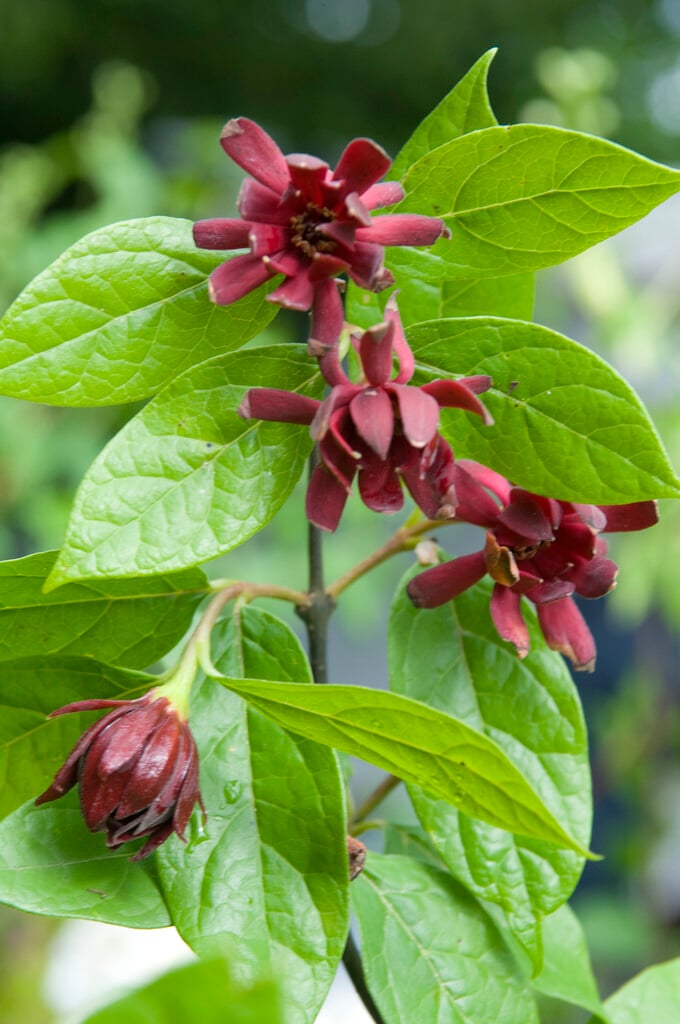Calycanthus floridus
Carolina allspice
Also known as the spicebush. It is a dense, spreading, bushy and sometimes suckering deciduous specimen shrub, bearing oblong to oval dark green to yellow leaves with hairy undersides. Dark brownish-red calyx-like strappy-petalled very fragrant flowers are borne at the ends of short branchlets in May. The fragrance is described as combining hints of pineapple, strawberry and banana. Urn-shaped fruit capsules follow flowers and persist throughout the winter.
Size
Ultimate height
2.5–4 metresTime to ultimate height
5–10 yearsUltimate spread
2.5–4 metresGrowing conditions
Moisture
Moist but well–drained, Well–drainedpH
Acid, Alkaline, NeutralColour & scent
| Stem | Flower | Foliage | Fruit | |
| Spring | Green | |||
|---|---|---|---|---|
| Summer | Red | Green | ||
| Autumn | Gold Yellow | |||
| Winter |
Position
- Full sun
- Partial shade
Aspect
North–facing or South–facing or East–facing or West–facing
Exposure
Sheltered Hardiness
H4Botanical details
- Family
- Calycanthaceae
- Native to GB / Ireland
- No
- Foliage
- Deciduous
- Habit
- Bushy, Columnar upright, Spreading branched
- Potentially harmful
- Humans/Pets: Harmful if eaten. Wear gloves and other protective equipment when handling For further information and contact numbers regarding pets, see the HTA guide to potentially harmful plants
- Genus
Calycanthus are deciduous shrubs with simple, aromatic leaves and solitary, fragrant flowers in summer
- Name status
Correct
- Plant range
- SE USA
How to grow
Cultivation
Prefers moderately fertile, humus-rich, moist but well-drained soil in partial shade where it grows taller, but tolerates a wide range of soil conditions and some sun. Shelter from cold, drying winds. Autumn colour is better in its native habitat.
Propagation
Propagate by softwood cuttings
Suggested planting locations and garden types
- Architectural
- City and courtyard gardens
- Cottage and informal garden
- Wildlife gardens
- Flower borders and beds
- Wall side borders
Pruning
Prune immediately after flowering to shape and maintain size. Remove root suckers promptly. Tends to form colonies in the wild.
Pests
Generally pest-free
Diseases
May be susceptible to honey fungus (rarely)
Get involved
The Royal Horticultural Society is the UK’s leading gardening charity. We aim to enrich everyone’s life through plants, and make the UK a greener and more beautiful place.
